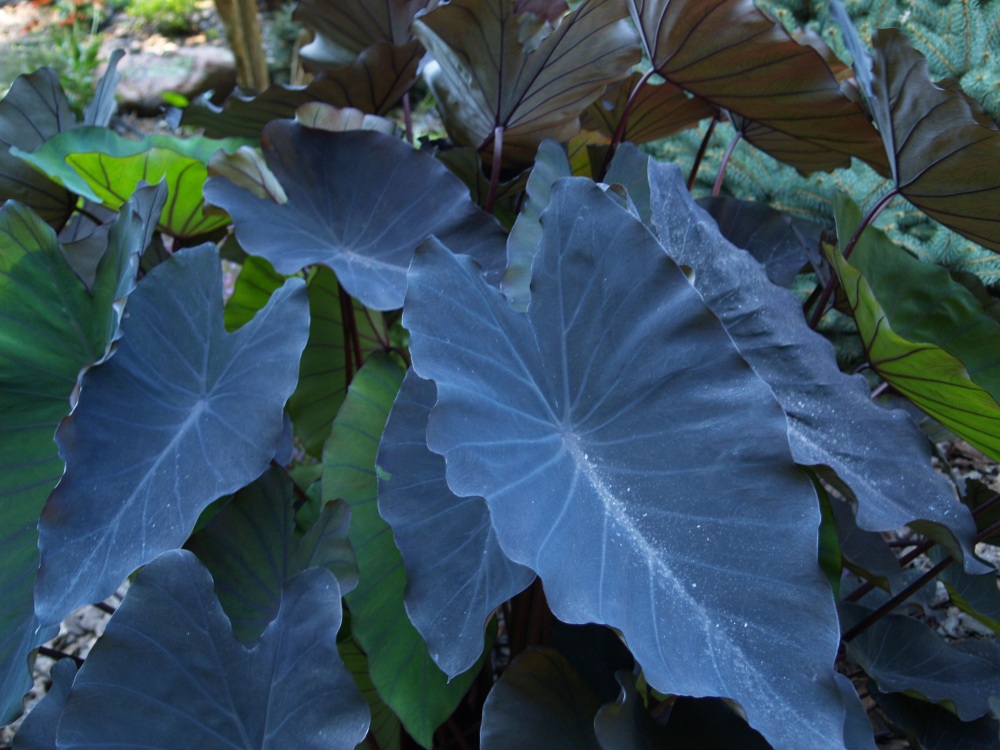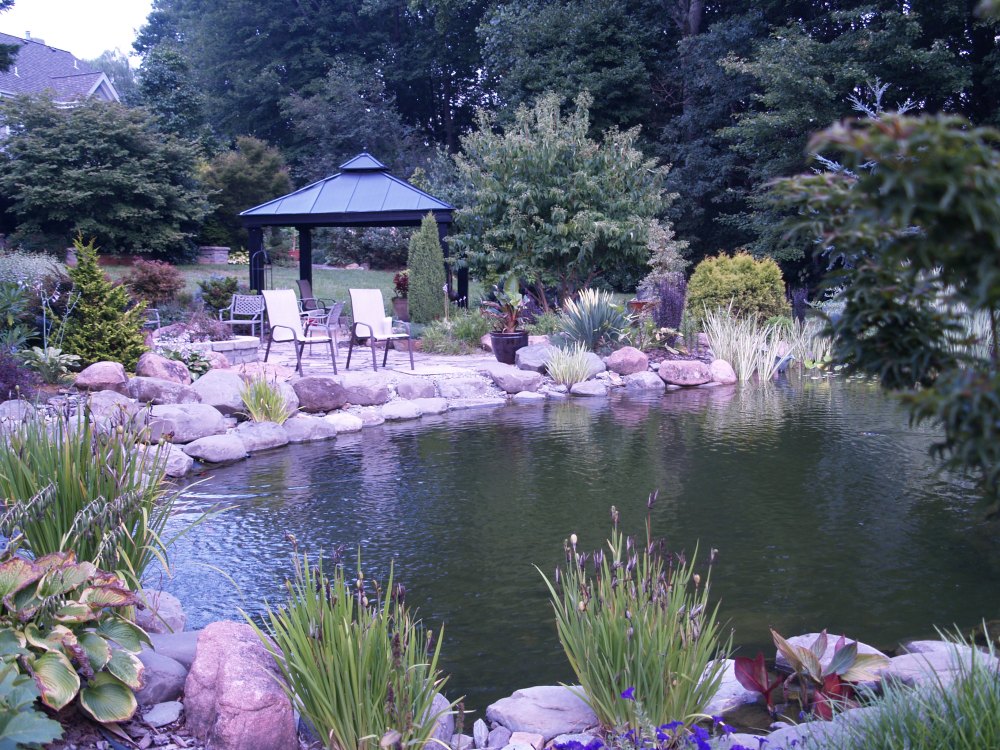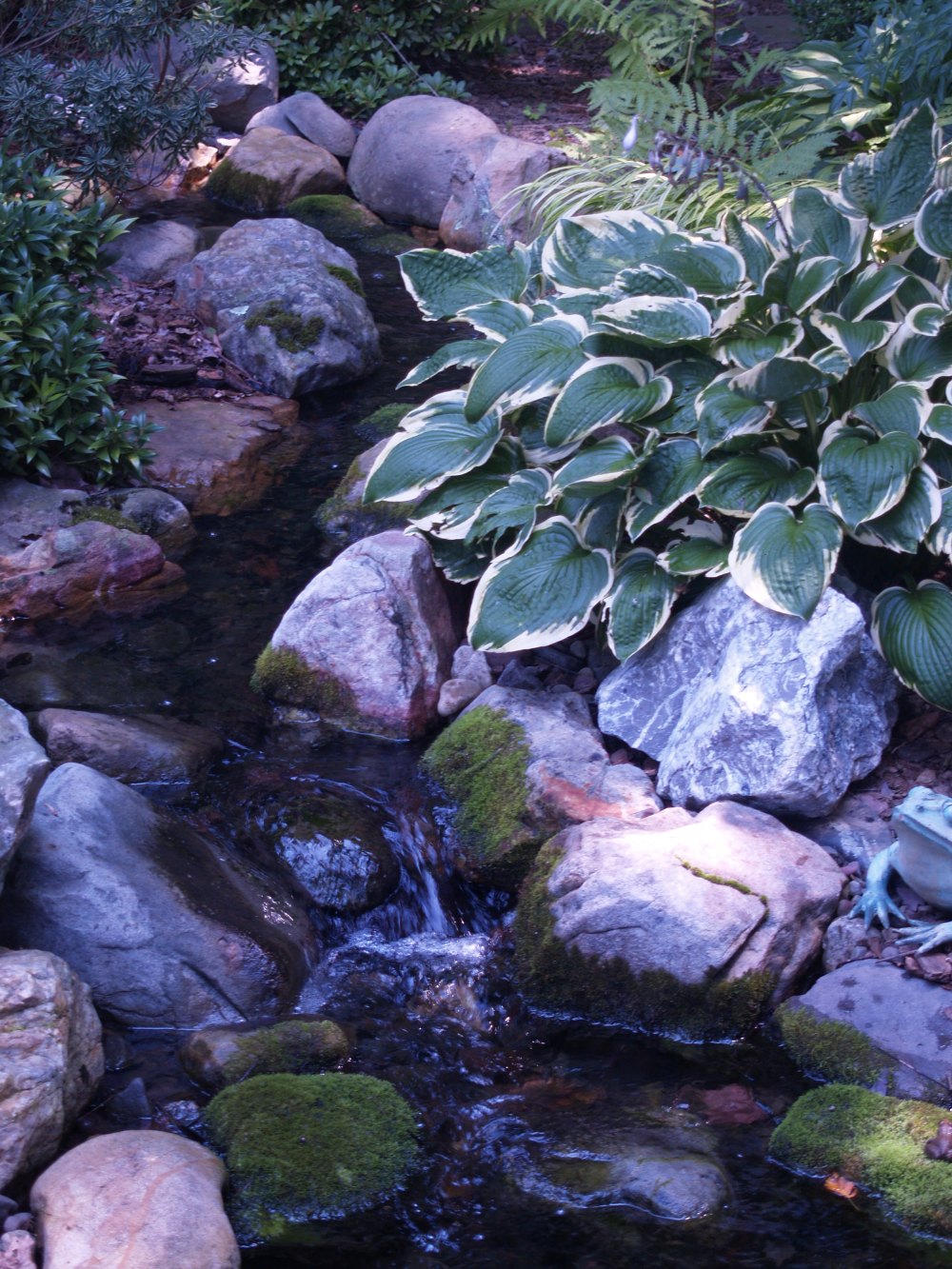I woke Saturday morning to driving rain, then a windy pause, followed by leaves raining from red maples in the forest at the border of the garden. I had been watching closely, I thought, for the turning of the the leaves so I could cover the ponds with netting, but I guess I wasn’t attentive enough.
 This is a sad day, covering the ponds seems to close the garden for the season. The tropicals, bananas and elephant ears, have been transplanted into large tubs and hauled to the basement for the Winter. Most of the perennials are fading, so the garden surrounding the ponds is taking on a Winter-look. Too soon!
This is a sad day, covering the ponds seems to close the garden for the season. The tropicals, bananas and elephant ears, have been transplanted into large tubs and hauled to the basement for the Winter. Most of the perennials are fading, so the garden surrounding the ponds is taking on a Winter-look. Too soon!
A few elephant ears with huge green leaves have been left until frost kills the tops, then the roots will be dug and stored in bags of dried, shredded leaves in the garage. There are too many and they are too large, and there are too few windows to provide enough sunlight to overwinter all in pots. Dahlias and cannas will get the same treatment. A few will probably rot, or dry out, but most will survive to be planted out after the threat of frost is past in May.
The rain persisted through late afternoon, so I was able only to cover the swimming pond before dark. This 1,600 square foot pond contains nearly 25,000 gallons of water, and I intend never to drain it for cleaning, so the priority was to cover it before leaves sank to the bottom. I was able to scoop some with a long handled net, and the pond skimmer captured others, so disaster was averted.
The swimming pond is nearly forty feet wide and a bit longer, and the lightweight nets will submerge once covered with leaves if not supported by cables. Steel rods are driven into the ground at pond’s edge, then plastic covered cables (the kind used for tieing up dogs) are strung and tightened to hover a foot or more above the water’s surface. The netting (a special ordered size of the same long lasting nylon netting used as deer fencing) is stretched tautly and anchored with stones at the edges.
Covering this large pond can be quite an adventure. Wet boulders and awkward footing, and the huge, tangled net, make the task more treacherous, with more than a few slips and close calls, but I avoided taking a swim in the cool water. The koi didn’t seem to notice. Since we quit feeding them early in the month, they have settled for swimming deeper in the pond, and showed little interest in my pratfalls.
The smaller ponds, and the long stream, were covered on Sunday, a dry, sunny day, with far less trouble. Even with assistance from the wife, stretching nets over the ponds and under the overhanging weeping Atlas cedar and Japanese maple entails a dunking or two, and squishing around in wet boots and socks for an hour.
I will leave the waterfalls running through the Winter. In the mid-Atlantic area we rarely have more than a week without temperatures rising above freezing, so ponds don’t freeze enough to require turning pumps off. In the worst case, waterfalls freeze and water is pumped over the edge of the liner and out of the pond until the pump runs dry. In my ponds that is a drop of only four or five inches due to the skimmer enclosure, not running the entire pond dry, so not a tragedy.
And now this unpleasant task is complete, the ponds are covered as the leaves are falling. The wet socks haved been laundered. The boots were left on the driveway for the sun to dry, and now a second storm has soaked them. With good fortune they’ll dry by the time the nets are to be removed in March.
We have found that by putting large inflated beach balls in the pond, they will keep the net from dropping into the pond when wet. That way, the leaves will not get in the pond water or weight the net down. The net will hold the balls pretty much in place. By the way, you have a beautiful pond.